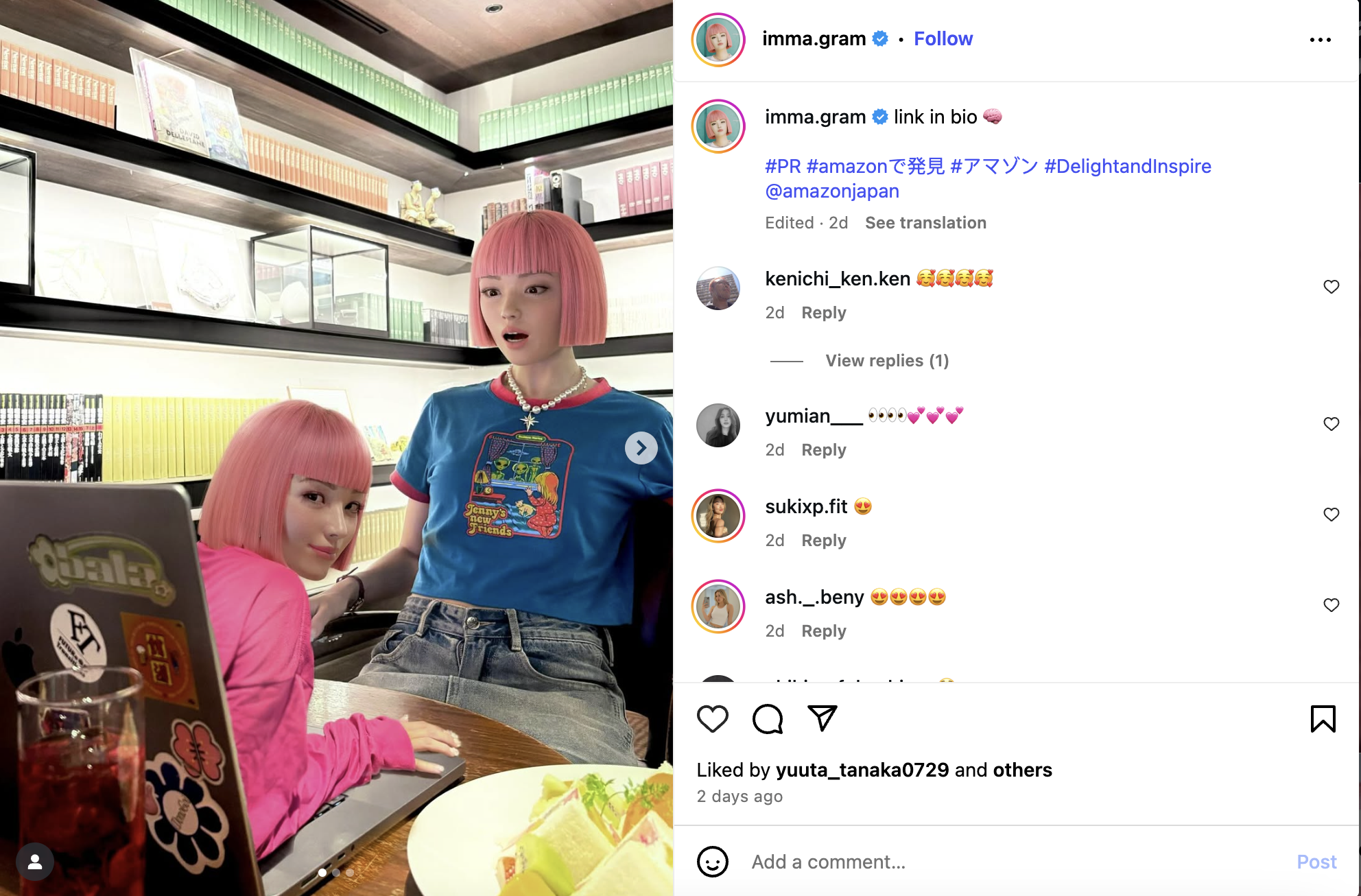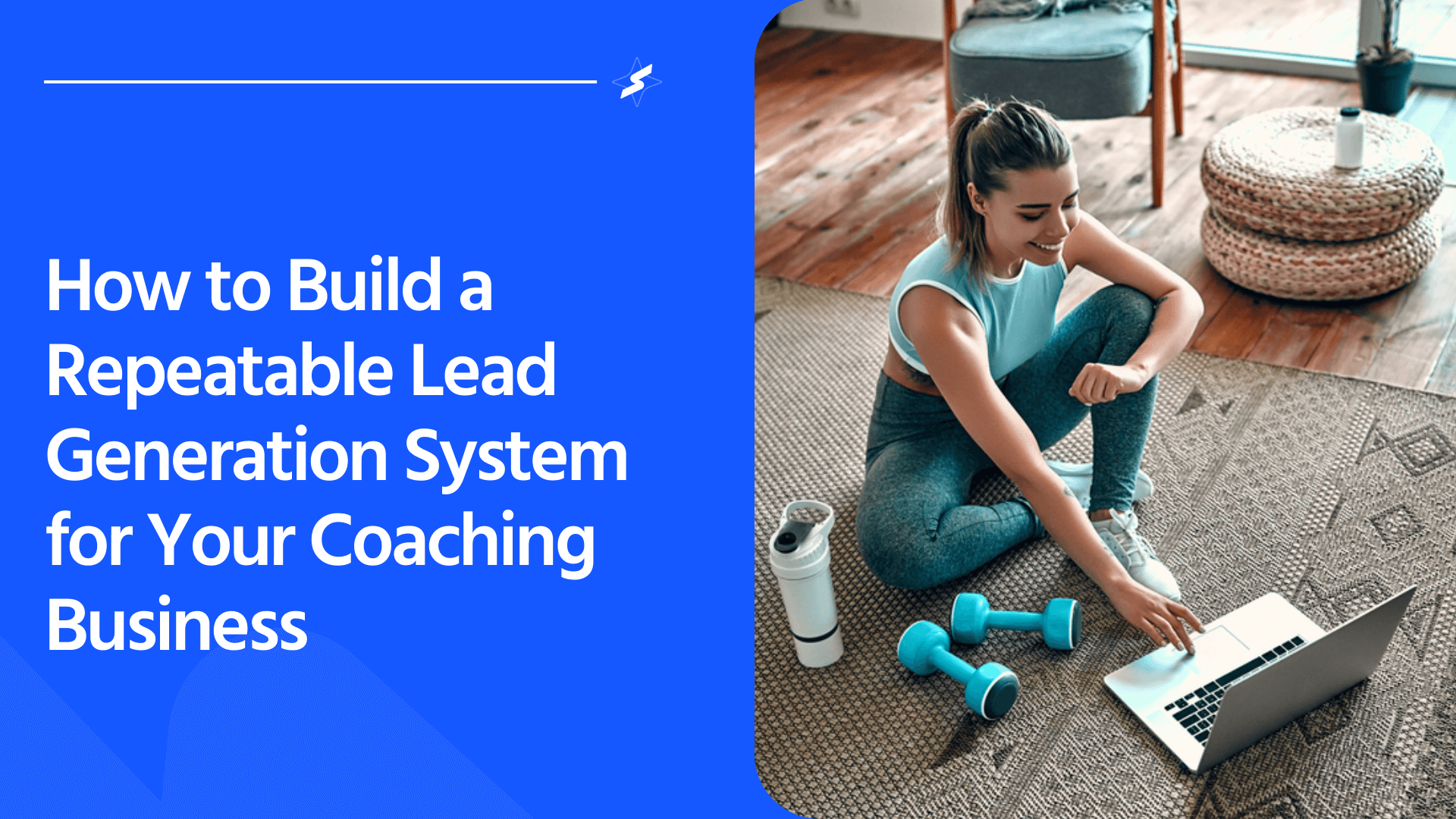What if your favorite Instagram creator wasn’t real?
In 2025, that’s not science fiction — it’s the new normal. From virtual models like Lil Miquela to AI-generated educators and brand ambassadors, AI influencers are reshaping how influence itself works. These aren’t just digital avatars with pretty faces; they’re algorithm-powered personalities designed to post, engage, and sell — all without human fatigue or creative burnout.
The rise of AI influencers on Instagram reflects a bigger shift in the creator economy: the blending of technology, storytelling, and identity. As tools for synthetic media and automation become mainstream, creators and brands alike are realizing that influence can now be programmed.
In this guide, we’ll break down how AI influencers are created, why brands are betting big on them, and what human creators can learn from this new wave of algorithmic influence.

What Are AI Influencers?
At their core, AI influencers are digital personalities designed and powered by artificial intelligence — capable of creating, posting, and interacting on social platforms just like real people. They’re not bots in the traditional sense; they’re fully branded identities with their own tone, style, and storylines.
There are two types of AI influencers shaping Instagram right now:
- Virtual AI Influencers — completely synthetic characters created using 3D modeling, AI voice synthesis, and personality scripting. Think Lil Miquela or Aitana Lopez — digital humans with carefully designed aesthetics and emotional arcs that attract millions of followers.
- AI-Assisted Human Creators — real people who use AI to scale their influence. They rely on tools to script captions, automate replies, generate visuals, or even produce virtual clones of themselves to manage content volume and engagement.
Both categories redefine what it means to be a “creator.” They prove that influence isn’t limited by biology anymore — it’s limited by creativity and code.
How AI Influencers Are Created
Behind every AI influencer is a surprisingly human process — a mix of creativity, data, and design that turns algorithms into personalities. Unlike traditional creators who rely on spontaneity, AI influencers are scripted, modeled, and managed like digital startups — complete with teams, brand managers, and emotional storylines.
Here’s how they’re typically built:
1. Design & Identity
Every AI influencer begins with a face — literally. Creators use 3D modeling, generative AI tools, and motion capture to craft hyperrealistic visuals. Then comes the personality layer: tone of voice, interests, values, and emotional range. Some even have fictional backstories, like “a 23-year-old fashion model from LA who loves techno and sustainability.”
2. Content Automation
Once the character is set, AI tools generate captions, photos, and even comments. These digital influencers can post daily without fatigue — powered by machine learning models that optimize for engagement and brand consistency.
3. Narrative Building
The most successful AI influencers aren’t static avatars — they have evolving story arcs. Followers witness relationships, travels, opinions, and product partnerships unfold over time. It’s character development meets content strategy.
4. Human Oversight
Finally, human creators and brand teams guide the AI’s direction — ensuring that while the influencer is synthetic, the storytelling remains relatable, timely, and emotionally intelligent.
Together, this mix of automation and human artistry creates a new kind of influencer — one that never sleeps, never burns out, and never runs out of content.
Why Brands Are Betting on AI Influencers
For brands, AI influencers are the perfect combination of creativity and control — a marketer’s dream that doesn’t sleep, argue over contracts, or go off-message.

What started as an experimental PR stunt has now evolved into a full-fledged marketing strategy. Top fashion, fitness, and tech brands are partnering with AI influencers for a few key reasons:
1. Predictability
AI influencers never miss deadlines, have scandals, or demand revisions. Every post, caption, and comment can be pre-approved and automated, ensuring brand safety at scale.
2. Creative Control
Brands can fine-tune visuals, tone, and messaging down to pixel precision. From product placements to facial expressions — everything can be aligned with campaign goals.
3. Cost Efficiency
Instead of long-term contracts and variable creator fees, brands invest once in creating an AI identity and reuse it across multiple campaigns. It’s the Netflix model of content — scalable and repeatable.
4. Global Reach
AI influencers can speak multiple languages, adapt to cultural nuances, and represent diverse identities. For global brands, that means one avatar can connect with millions across continents.
The takeaway? AI influencers give brands scale, safety, and storytelling — all at once. It’s not about replacing human creators, but about expanding what influence can look like in a digital-first world.
The Ethics and Authenticity Debate
Every time a new AI influencer goes viral, the same question resurfaces:
Can something that isn’t human be authentic?
The rise of AI influencers forces us to rethink what “real” means online. These digital personalities don’t age, argue, or make mistakes — but they also don’t feel, dream, or experience the world they post about. That paradox sits at the heart of the ethical debate.
1. Transparency
Audiences are increasingly asking for clarity on whether an influencer is AI-generated or human. Some creators disclose it upfront; others blur the line intentionally to spark intrigue. As regulations evolve, disclosure might become mandatory for AI-driven content — especially in advertising.
2. Deepfake & Identity Risks
When faces and voices can be cloned, questions about consent, likeness rights, and identity theft arise. Who owns a virtual face? What happens when an AI influencer looks like a real person without permission?
3. Emotional Manipulation
AI influencers are programmed to be likable. But can an algorithm understand the emotional nuance of its followers? The risk is in manufacturing parasocial relationships without accountability — engagement without empathy.
Still, this isn’t just about ethics — it’s about evolution. Authenticity on social media has already shifted from “being real” to being consistent and intentional. In that sense, AI influencers may simply be mirroring what human creators already do — just more predictably.
How Real Creators Can Learn from AI Influencers
The rise of AI influencers isn’t the end of human creativity — it’s the blueprint for the next stage of it. Behind every synthetic creator is a lesson in consistency, storytelling, and scalability that real creators can use to grow faster, smarter, and more sustainably.
Think of it this way: AI influencers run like systems, not individuals. And the best human creators in 2025 are starting to do the same — blending automation, creativity, and strategy to build audiences that convert.
Here’s what human creators can learn (and apply today):
1. Build a Distinct Personal Brand
AI influencers are built with brand clarity from day zero. Their color palettes, tone, and story arcs are deliberately chosen — not random.
They don’t “find” their voice over time; they’re programmed with it.
That’s a cue for every creator trying to stand out in the endless scroll:
- Define your core narrative — what you talk about and why it matters.
- Stick to 2–3 consistent visual styles or tones that followers can recognize instantly.
- Make every post feel like part of a bigger story — not a one-off.
💡 Pro tip: Treat your Instagram like a brand deck. The more predictable your personality becomes, the more memorable your presence feels.
2. Automate Engagement, Don’t Fake It
AI influencers never let messages pile up — and that’s part of their charm.
Human creators, on the other hand, often lose opportunities simply because they can’t keep up with DMs, story replies, or product queries.
That’s where automation bridges the gap.
With SuperProfile AutoDM, you can:
- Instantly reply to comments or story reactions.
- Deliver free resources (“Reply ‘Guide’ for my toolkit”).
- Funnel followers to your digital products, newsletters, or collabs.
You stay authentic — while your engagement runs on autopilot.
It’s not about faking connection; it’s about scaling it.
3. Repurpose Like a Machine
AI influencers post every day, not because they have endless ideas — but because they’re built on systems of reuse and iteration.
Human creators can adopt the same model:
- Turn one idea into five pieces of content — a carousel, reel, caption, email, and tweet.
- Revisit high-performing topics monthly and update them with new insights.
- Use automation tools to schedule content in advance, freeing up space for strategy.
In the attention economy, consistency beats originality.
You don’t need to reinvent your message — you just need to reframe it for fresh contexts.
4. Use AI as Your Creative Copilot
The smartest creators don’t fight AI — they collaborate with it.
AI tools can help brainstorm post hooks, analyze engagement patterns, and even simulate how your followers might react to new content.
You’re still the storyteller — AI just amplifies your speed, creativity, and scale.
🧩 Mini Stack Example:
- Ideation: ChatGPT or Notion AI
- Automation: SuperProfile AutoDM
- Distribution: Buffer / Metricool
- Analytics: Instagram Insights or Google Looker Studio
When used intentionally, this hybrid model gives you the consistency of an AI influencer and the emotion of a human creator — the best of both worlds.
5. Systemize Your Growth
What AI influencers really teach us is discipline. They run on systems, not moods.
To grow sustainably, you need workflows — not willpower.
That means:
- Creating a content engine (plan → produce → publish → promote).
- Measuring what works every week (traffic, shares, saves, DMs).
- Using automation to reduce friction, not personality.
Once your creative process runs like a machine, you’ll have more time to actually be creative again.
How to Build an AI Influencer (Step-by-Step + Tools)
Building an AI influencer today is less about coding and more about creative orchestration. You combine design, storytelling, and automation tools to bring a synthetic persona to life. Here’s how to do it — and which tools to use at each stage.
Step 1: Define the Concept & Personality
Before the tech, define the story. Decide who your AI influencer is — their name, age, values, niche, tone, and world. You’re not building a robot; you’re designing a digital character with purpose.
🧩 Tools for Concept & Voice:
- ChatGPT / Claude / Gemini — brainstorm backstory, tone of voice, and brand values.
- Notion AI — build a structured character profile (bio, brand pillars, interests).
- Character.ai / Inworld.ai — prototype conversations to develop a realistic personality and dialogue style.
Step 2: Design the Visual Identity
This is where the influencer comes alive. You’ll need tools to generate faces, outfits, expressions, and style consistency.
🎨 Tools for Visual Design:
- Midjourney / Leonardo.ai — create photorealistic influencer images in various moods and outfits.
- D-ID / Pika Labs / Runway ML — animate still portraits into talking videos or story reels.
- Kaedim / Blender / Unreal Engine Metahuman — for high-end 3D modeling or brand-level realism.
- Canva / Figma — design static content like posts, reels covers, and carousels.
💡 Tip: Keep the same facial features and lighting setup across images to maintain identity consistency.
Step 3: Build the Social Persona
Once visuals and tone are ready, start shaping how your influencer behaves online — what they post, how they reply, what causes they support.
📱 Tools for Personality & Posting:
- ChatGPT / Jasper / Copy.ai — generate captions, hashtags, and content prompts.
- OpusClip / Veed.io / Pictory — create short-form video edits from AI-generated visuals or scripts.
- Descript — add voiceovers using cloned or AI-generated voices.
- ElevenLabs / Play.ht — for hyperrealistic AI voice synthesis (English + multilingual).
Step 4: Automate Engagement
This is where the AI influencer starts behaving like a creator — responding to followers, sending links, and joining conversations.
⚙️ Tools for Automation:
- SuperProfile AutoDM — automate comment replies, story reactions, and DMs.
- Manychat / Flowise / Voiceflow — build conversational flows or comment triggers.
- Zapier / Make — connect your automation stack (e.g., Instagram → Google Sheets → content planner).
💬 Example Flow:
Follower comments 💬 → SuperProfile AutoDM sends thank-you message → Link to digital product or newsletter.
Step 5: Analyze, Learn, Iterate
Like any influencer, your AI persona improves over time. Analyze what content works and refine both visual and narrative elements.
📊 Tools for Tracking & Optimization:
- Instagram Insights / Metricool / Later Analytics — track reach, engagement, and follower growth.
- Notion / Airtable — manage posting calendar and content iterations.
- Looker Studio — visualize campaign performance and engagement patterns.
Step 6: Monetize (Optional but Fun)
Once you have audience traction, treat your AI influencer like a mini business.
Sell digital products (Notion templates, AI prompt packs), collaborate with real brands, or build affiliate partnerships using automation tools.
💸 Tools to Enable Monetization:
- SuperProfile.bio — create a storefront and automate DMs for digital product sales.
- Lemon Squeezy / Gumroad — sell downloadable assets.
- Stan Store / Beacons — build link-in-bio monetization hubs.
⚡ Pro Tip: Keep a Human in the Loop
Even the most sophisticated AI influencer needs creative direction — your intuition as a marketer or storyteller keeps it believable and ethical. AI can scale creativity, but only you can make it resonate.
The Future of Influence: Human + AI Collaboration
The next era of social media isn’t about humans vs. AI — it’s about humans working with AI.
The real opportunity lies in hybrid influence — where creators combine their authenticity with AI’s scale, precision, and creativity.
Already, we’re seeing the early signs:
- Creators co-hosting content with AI clones of themselves.
- Agencies building AI avatars to test campaign ideas before hiring talent.
- Brands partnering with creators who use AI storytelling tools to craft interactive, multi-format narratives.
This hybrid model changes everything.
Instead of chasing constant virality, creators will focus on strategic automation and creative leverage — using AI to enhance ideation, distribution, and engagement, while staying the emotional core of their brand.
In this future, influence becomes programmable — but still profoundly personal.
Creators who learn to blend human storytelling with algorithmic efficiency will shape what the next generation of audiences trust, follow, and buy from.
Where SuperProfile Fits In
SuperProfile sits right at this intersection — giving real creators the power to act like AI systems, without losing their voice.
With AutoDM, link-in-bio storefronts, and data-driven insights, it helps you automate the technical side so you can focus on the creative one.
.png)

.png)




.svg)




